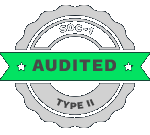Maybe you’re interested in bringing enterprise mobility to your company, but you can’t justify the price you’ve been quoted. Maybe you’ve already implemented enterprise apps, but don’t feel like you’re getting the ROI you expected.
Regardless of where you stand, one question all IT heads have to ask is this: How can I get the greatest employee productivity out of my budget? In this article, we’ll show how to answer this question through enterprise mobile app solutions.
Choose Cross-Platform Development
Cross-platform mobile app development is perfect for BYOD companies, as it enables all employees to gain access to enterprise applications regardless of which device they’re using. Not only is this an efficient way to facilitate collaboration, it also spares you substantial costs.
InfoQ revealed that between 50% and 80% of an application’s code can be reused across platforms, which naturally results in a more cost-effective solution than building separate codebases for a selection of native apps. This saves time and resources in development as well as maintenance through updates that occur later on.
To learn more about the state of cross-platform app development, check out our press release on the topic here
According to IDG’s 2016 Enterprise Cloud Computing Survey, 90% of enterprises are either currently running cloud apps or are planning to do so within the next 3 years. The reason cloud computer services are so popular is there is no trade-off when it comes to switching to the cloud.
Here are a few cost-effective benefits of cloud applications:
-
Easy to manage resulting in lower cost
-
Increased employee productivity
-
Equipped for scalability at any time
-
Improved reliability, resilience, and integrity
-
Available to all employees, everywhere
Simply put, cloud computing streamlines enterprise mobility so that both your IT team and the rest of the company employees can be more efficient with their time. In particular, businesses are increasingly turning to cloud networking techniques to facilitate data analytics and data management. If you haven’t considered where you can shave off operational costs through business automation, now is the time to start.
Thinking about converting to the cloud? Give us a call to chat with our cloud computing experts about the process.
Think Enterprise-Wide Solutions
Once you’ve decided to enhance your company’s enterprise mobility, don’t think one mobile app at a time. Think about the different applications you plan to develop, even if they’re not all being implemented at the same time, and how they will eventually fit together. There’s a good chance that several features can be reused from one app to another.
For example, if you’re building two different apps for the sales team and the marketing team, there’s a high probability that there will be an overlap of tools needed by both departments. For example, instead of developing the same presentation of a product twice, you can simply have your provider create it once for the marketing team and adjust it for the sales team. With each application, you’ll find that you use your resources and funds more and more effectively.
However, thinking holistically doesn’t stop with your in-house IT department – it’s important to choose the right vendor who understands your needs and how to make them happen successfully. BluEnt has worked on mobile apps for a variety of different organizational departments, from Marketing to Human Resources, and always with the goal of finding innovative, scalable solutions at an affordable cost. To get a quote on our custom application development solutions, fill out a form today.
Enable Different Levels of Permission
As the movement towards enterprise mobile app has taken over at an alarming rate, the number one concern for businesses is to guarantee the security of company and employee information. This has been the subject of a variety of new standards, tools, and IT practices, but one of the simplest ways to begin tackling security is through permission levels.
Especially when your company employs workers remotely, it is of the utmost importance that there are measures in place that screen who has access to the data and how. This is not only a question of who can use an application, but how much app functionality is available to each user and to different types of devices (i.e. BYOD laptops vs. enterprise-grade desktops). If you don’t already, consider separating all information into three broad categories:
-
Public data
-
Confidential data
-
Restricted data
This will enable you to organize who can view what and where, and thus help you create a map of permission levels to share with your executive team and app developers. If you’d like more information about the security options BluEnt offers our clients, send us an email.
Keep the Integration Process Efficient
Once your custom enterprise application is ready to be put to use, the challenge becomes integrating it with your existing business solutions. The longer this process takes, the costlier it becomes. After all, not only does it affect development costs, but the app also isn’t adding value to your organization during this period.
Once again, the key takeaway here is to choose a vendor who is experienced in business integration services involving ERP, CRM, Supply Chain, Legacy Systems or whichever solutions are relevant to your company’s needs. BluEnt’s Enterprise Application Integration (EAI) practice enables clients to deal with today’s IT challenges, such as managing a diverse array of software applications, platforms, languages, and hardware. We ensure that the apps we develop transition smoothly into the workplace, creating maximum value for the employees and enterprises using them.
Ready to put these tips to the test? Send us a message today to learn more about how BluEnt can create a full-package solution tailored to your enterprise’s budget, targets, and needs.
Maximum Value. Achieved.



 How Much Does App Development Cost? A Budget Estimation Guide
How Much Does App Development Cost? A Budget Estimation Guide  Using Angular to Develop Mobile Apps Can Be a Game Changer for Your Business
Using Angular to Develop Mobile Apps Can Be a Game Changer for Your Business  Pros and Cons of the WooCommerce Plugin for Online Merchants
Pros and Cons of the WooCommerce Plugin for Online Merchants  Mean Stack vs LAMP Stack: Which One is Better for Your Business?
Mean Stack vs LAMP Stack: Which One is Better for Your Business? 
